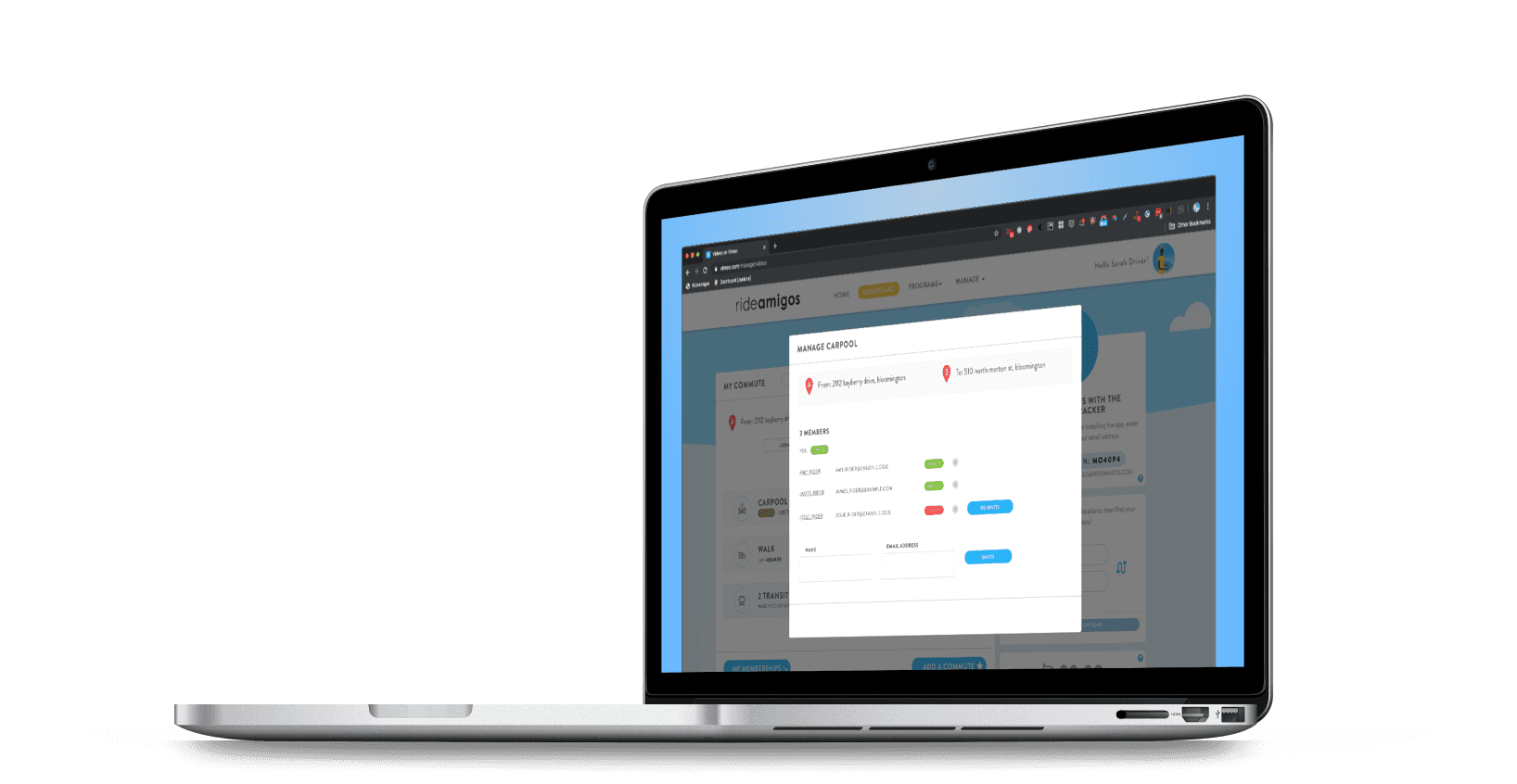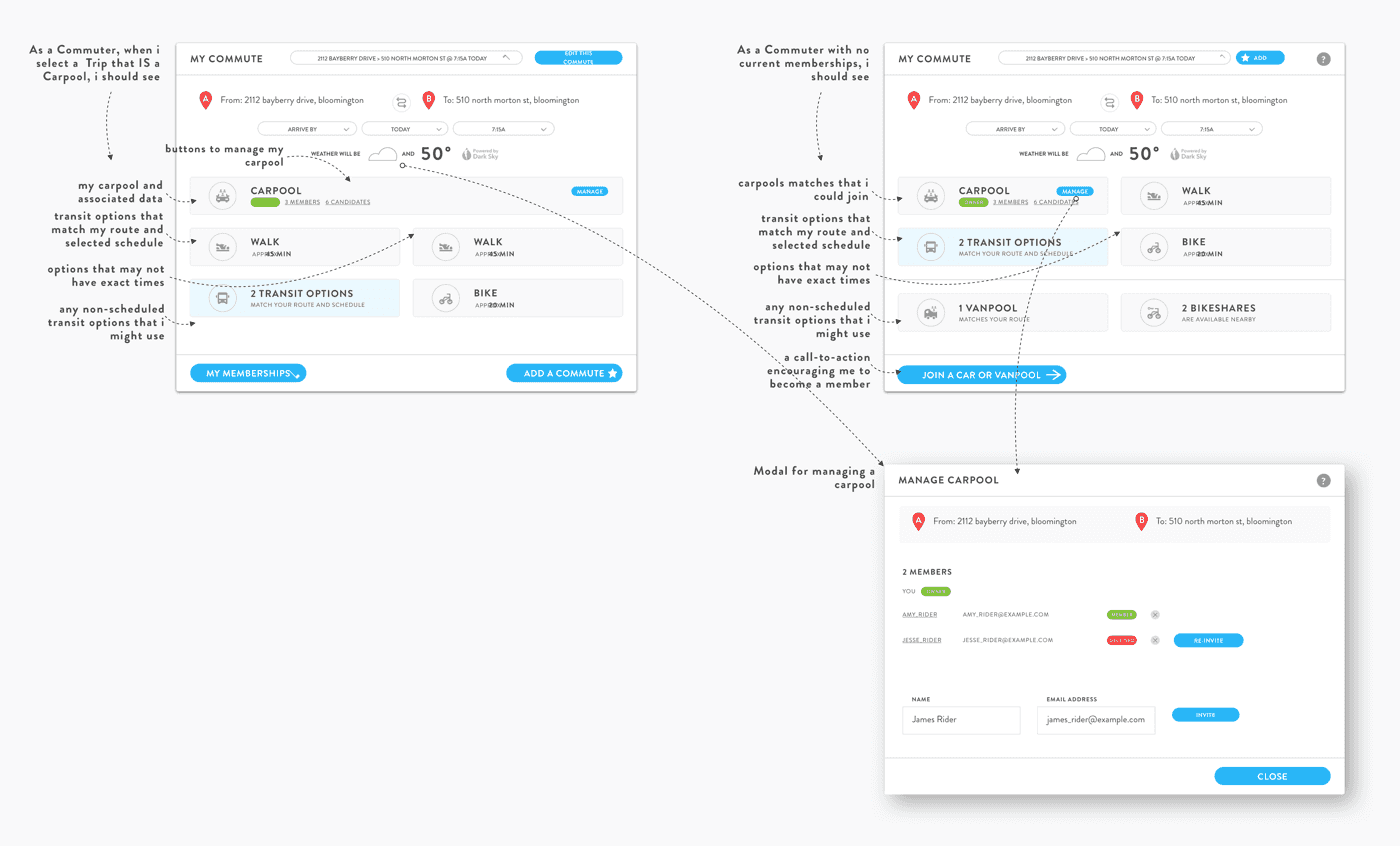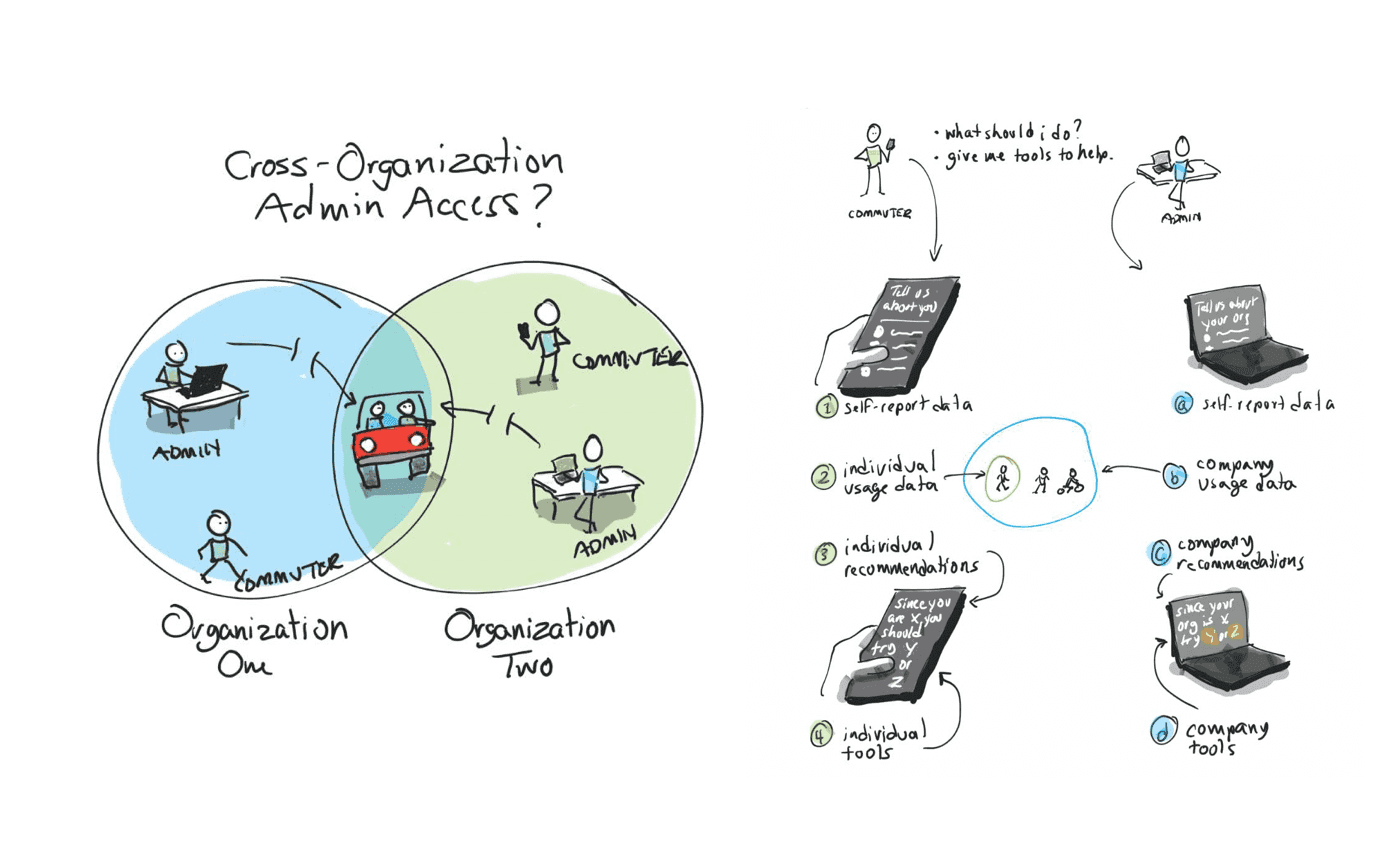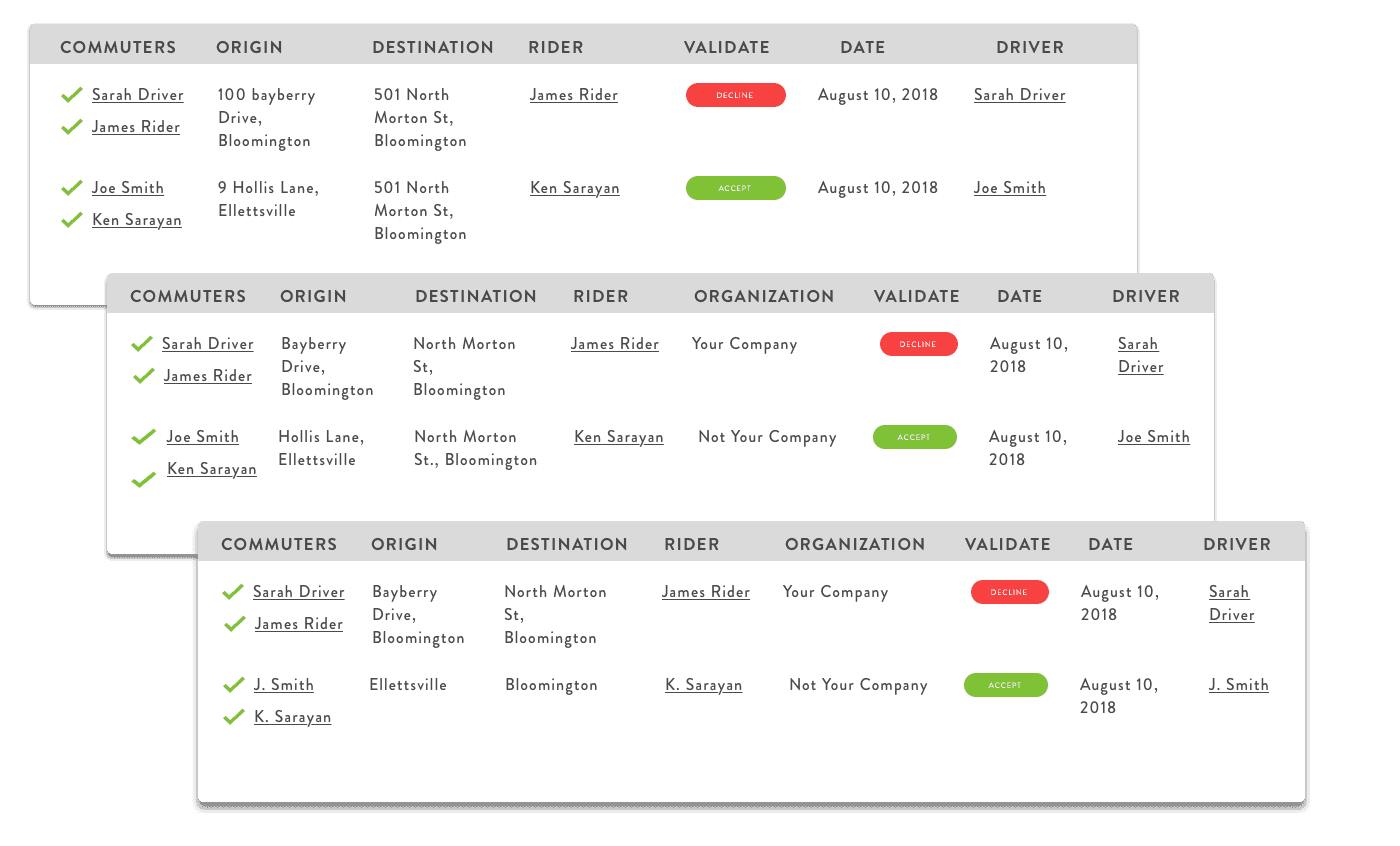RideAmigos Carpool Verification
design / prototyping / user testingDesign, prototype and testing of new feature to verify carpool trips

Problem
The RideAmigos platform offers organizations a way to track and incentivize non-SOV (Single Occupancy Vehicle) commuting for their employees. In many cases, carpooling provides significant reductions in traffic and vehicle emissions while providing more speed than walking or bicycling and more schedule flexibility than public transit or vanpools. For incentivized commuting to work, the employer needs an easy and trustworthy way to track and verify carpools, and the carpoolers need an easy and trustworthy way to track and report their trips to the employer. This presented significant design challenges from the start
- Ensure the user and transaction flow could be easily understood by the RideAmigos BizDev, Dev, Customer Success and Sales teams
- Test the concept interactively before writing any code
- Present the interactive prototype to internal and external stakeholders for buy-in
- Design for eventual inclusion in the mobile app
The Solution
Because the eventual solution would be complex and require significant changes to both front end and back end code, our initial approach relied heavily on flow diagrams and mid-fidelity interactive prototypes. We shared and discussed these first artifacts with internal stakeholders from the RideAmigos BizDev, Dev, Customer Success and Sales teams and a select group of customers to achieve clarity before writing a line of code.
My Role
My role in this project was to create the prototypes and help ensure shared clarity in the minds of the internal and external stakeholders.
Research
In this phase of the project, we used artifact-centered focus groups to engage stakeholders from the RideAmigos BizDev, Dev, Customer Success and Sales teams, and then with a select group of customers. The primary goals were to discover and iterate on any parts of the process and interface design that were unclear, unworkable or might not support the broader goals of the project.

Insights
Though the insights at this phase of the project were few and subtle, they had huge implications for the future of the project. In reviewing the administrator view of a carpool for instance, serious future privacy concerns were surfaced. At the time, anyone who logged a carpool together and the admin who reviewed the details would be doing so as part of the same organizational instance of RideAmigos. They had all signed the same privacy agreement, and almost always knew each other outside of the platform.
In our sessions it became clear that this would present problems in future multi-organizational versions of the platform that would allow the details of a commuter from one organization (e.g. an employer) to be seen by the admin of another (e.g., a regional transportation agency).

Prototypes
In order to focus on high-level process questions, we used flows and high-fidelity clickable prototypes with simple interactions and explanatory captions.

Testing and Iteration
Phase 2 of the project would include user testing and iteration to ensure that the process is easy, trustworthy and useful for commuters and for admins. In this phase however, iterations were based on discussions between internal and customer stakeholders.
The admin screen, for example, went through several iterations to limit the amount of personal commuter data available to the admin.

Conclusions
Perhaps the most difficult design challenge in Phase 1 was to fit the fidelity and format of the prototype to the needs of the stakeholders. By facilitating discussions using high-level flows and high-fidelity, limited-interaction clickable prototypes we were able to relatively quickly surface important big-picture issues early in the project.
As a result, we were able to avoid several future privacy, legal and architectural mis-steps, and to focus on the solutions to be designed, tested and rolled out in Phase 2, which is scheduled to begin in early 2020.